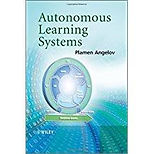In total, over 400 publications were published for the last 30+ years. These include:
-
3 monographs, which set new directions of research
-
over 135 peer reviewed journal papers mostly with high impact factor, e.g. TPAMI, Information Fusion, TMLR, IEEE TCYB, IEEE TFS, etc. See selected publications at top journals by clicking
-
over 180 papers in peer reviewed proceedings of international conferences (at conferences such as CVPR, NeurIPS, ICLR, ICCV, ECCV, IJCNN, etc.). See selected publications at top journals by clicking
-
5 edited books
-
18 conference proceedings published as edited volumes
-
27 chapters in books
-
7 filed patents (3 granted in USA), etc.
These publications attracted over 18700 citations (according to Google Scholar), h-index 66 (i-10 index 237).
He is international leader in AI area (ranked top 0.2%: 731st out of 399066 researchers in AI worldwide) according to Stanford University's "Top 2% Scientists" list) with over a dozen of highly cited papers (according to Web of Science)
The full list of publications for journal articles, research monographs, edited books and patentscan be found at
https://angeloventelsensys.wixsite.com/plamenangelov/all-publications
at https://angeloventelsensys.wixsite.com/plamenangelov/all-publications-2nd-part for peer reviewed conference papers and for other publications including arXiv and similar repositories, Edited Proceedings, etc. at https://angeloventelsensys.wixsite.com/plamenangelov/all-publications-2nd-part











